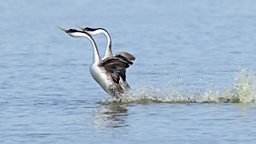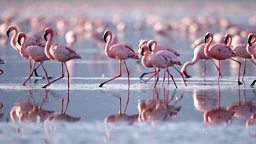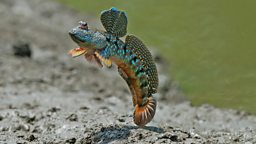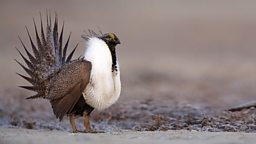Main content
Clark鈥檚 grebe
During their rush ceremony grebes paddle up to 22 steps a second
How do these birds dance on water?
- Instead of webbed feet Clark’s grebes have lobed toes.
- Instead of having legs positioned underneath their body, Clark’s grebes’ legs are positioned to the back of their body. It means they are clumsy movers on land but supremely efficient swimmers and divers.
- During their rush ceremony grebes paddle up to 22 steps a second. At the end of each stride, they lift their feet out of the water - swinging them out to the side and folding their three front toes together to reduce drag.
Clark’s grebes are the largest animals capable of running on water:
- Weighing up to 1.8 kg, they are far heavier than other vertebrates capable of the feat – such as the basilisk lizard – which weigh just 200 grams.
Clark’s grebes were dismissed as a variant of the similar looking western grebe for over 100 years:
- It was not until the 1980s that studies revealed there are a distinct species.






